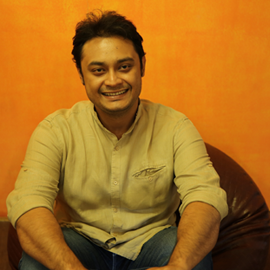Universities wasting taxpayers' money? No, India is actually improving

One of the biggest allegations emerging out of the JNU sedition row is that taxpayers' money is being wasted by students of central universities and other higher education institutions.
However, according to reputed science, technical and medical publisher Elsevier, India's global share, at least in terms of scholarly output in science and technology, has risen from 3.1% in 2009 to 4.4% in 2013.
The report looks at the publication output by countries, based on peer-reviewed journals. In India, publications from 30 institutions were surveyed.
Here are some of the major findings from the report:
- The number of scientific papers that were published from India in 2013.
- In 2009, about 62,955 scientific papers were published
In 2014, 112,009 papers were produced, increasing by a meagre 5%.
- During this time, India's share of the world output of international collaboration publications increased from 3.3% to 3.9%.
In 2009, India's output crossed Spain, Australia, Korea, Brazil, Sweden and Singapore. In 2013, India even crossed Canada and Italy.
Also read: #JNUCrackdown: Dear Mohandas Pai, we fund your sector, not opinions
- Total number of India's patent citations in 2013.
- In 2009, the number was 953.
India's global share during this period increased from 1.7% to 2.2%.
- Elsevier states: "India is still a relatively small player on the global scientific stage, its wide-ranging international collaboration network and increasing shares of the world's main research performance indicators reflect its overall growth in output, impact and knowledge transfer."
Also read: Rohith Vemula is an icon to me, not Afzal Guru: JNUSU president Kanhaiya Kumar tells media
- Chemistry and Pharmacology, the two main areas of scientific focus in India between 2009-13.
- The Indian Institute of Science, Bangalore, led in Chemistry, while Annamalai University excelled in Pharmacology.
India's top three institutions in science and technology in this period were the Indian Institute of Science, Bangalore, IIT Kharagpur and IIT Delhi.
- The bottom three were the University of Mysore, the Jawaharlal Nehru University and the University of Pune.
- The number of science researchers in India.
- Though India's output has increased, the citation impact is 0.75, which is 25% less than the global average.
Engineering papers are cited the most (still 6% less than the world average), followed by materials science and veterinary science.
Also read: Public-funded institutions can't house criticism for govt: Aligarh BJP MP
- The proportion of India's scholarly output that was the result of international collaboration.
- The 'most impactful' collaborations were with Brazil, Russia, Netherlands, Spain, China and Sweden. The least impactful was with Malaysia.
However, the highest share of publications in India are a result of institutional collaboration, followed by national-level collaborations, and the least, single-author.
India is taking small steps and improving, even crossing China. "On the quality side, although we see an overall impact that is below the world's average, there is a rising share of higher-quality articles from India. Articles from India that resulted from international collaboration show impressively high quality, at more than twice the impact of articles from a single institute," said Dr Michiel Kolman, senior vice-president of academic relations at Elsevier.
Edited by Shreyas Sharma
More in Catch:
#JNURow: legal scholar Liang champions the right to be seditious
#RohithVemula to #ShutDownJNU: these are the new battlefields
First published: 9 March 2016, 2:12 IST





![BJP's Kapil Mishra recreates Shankar Mahadevan’s ‘Breathless’ song to highlight Delhi pollution [WATCH] BJP's Kapil Mishra recreates Shankar Mahadevan’s ‘Breathless’ song to highlight Delhi pollution [WATCH]](https://images.catchnews.com/upload/2022/11/03/kapil-mishra_240884_300x172.png)

![Anupam Kher shares pictures of his toned body on 67th birthday [MUST SEE] Anupam Kher shares pictures of his toned body on 67th birthday [MUST SEE]](https://images.catchnews.com/upload/2022/03/07/Anupam_kher_231145_300x172.jpg)






